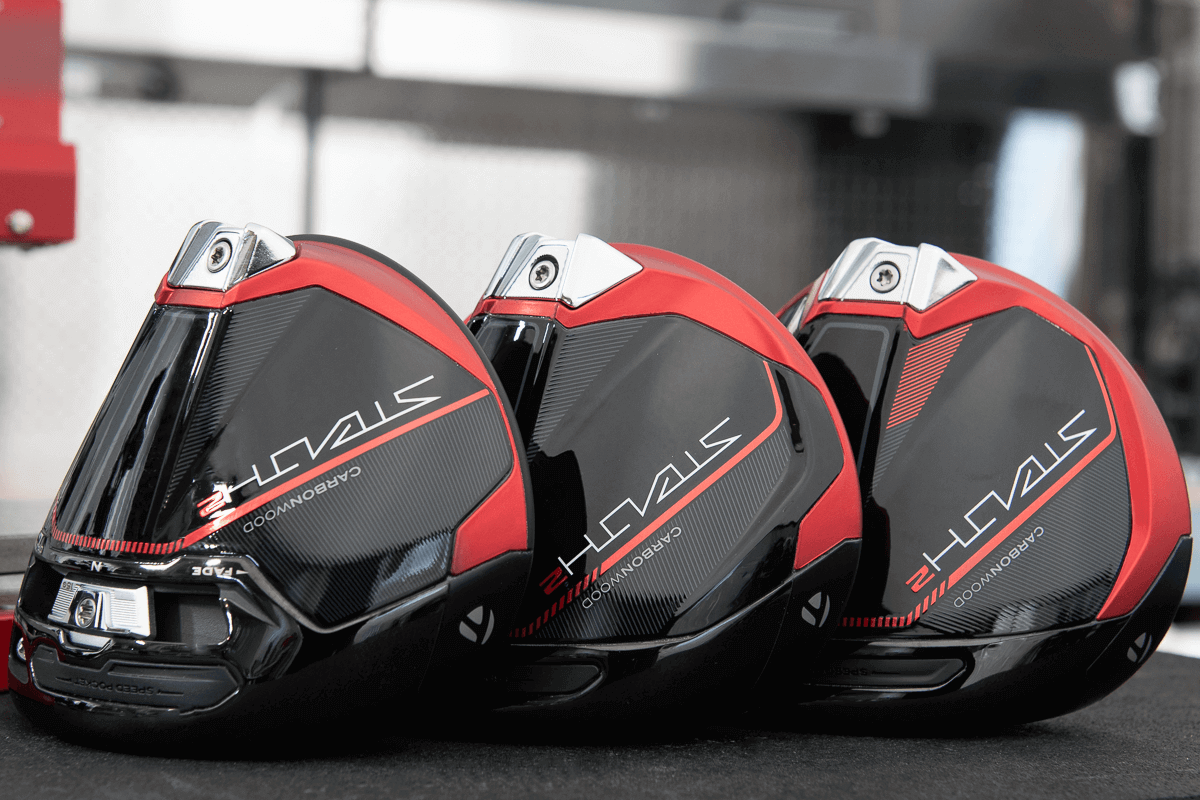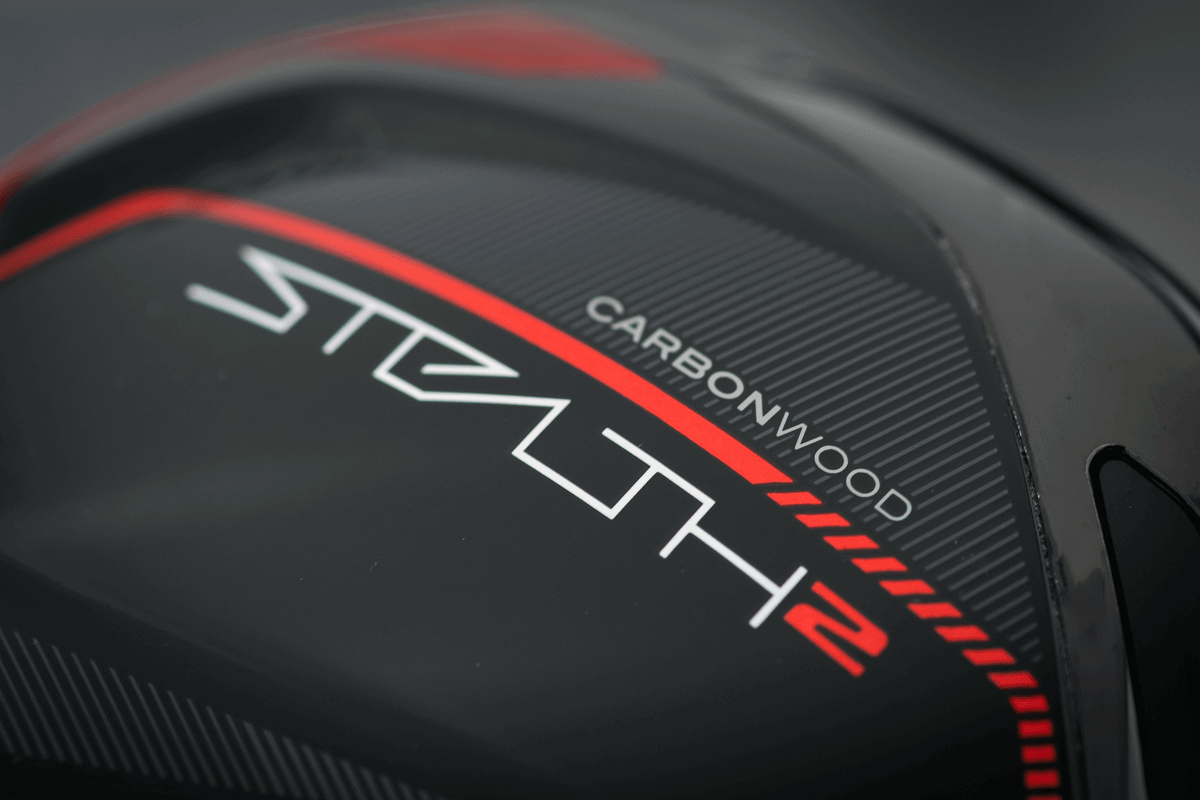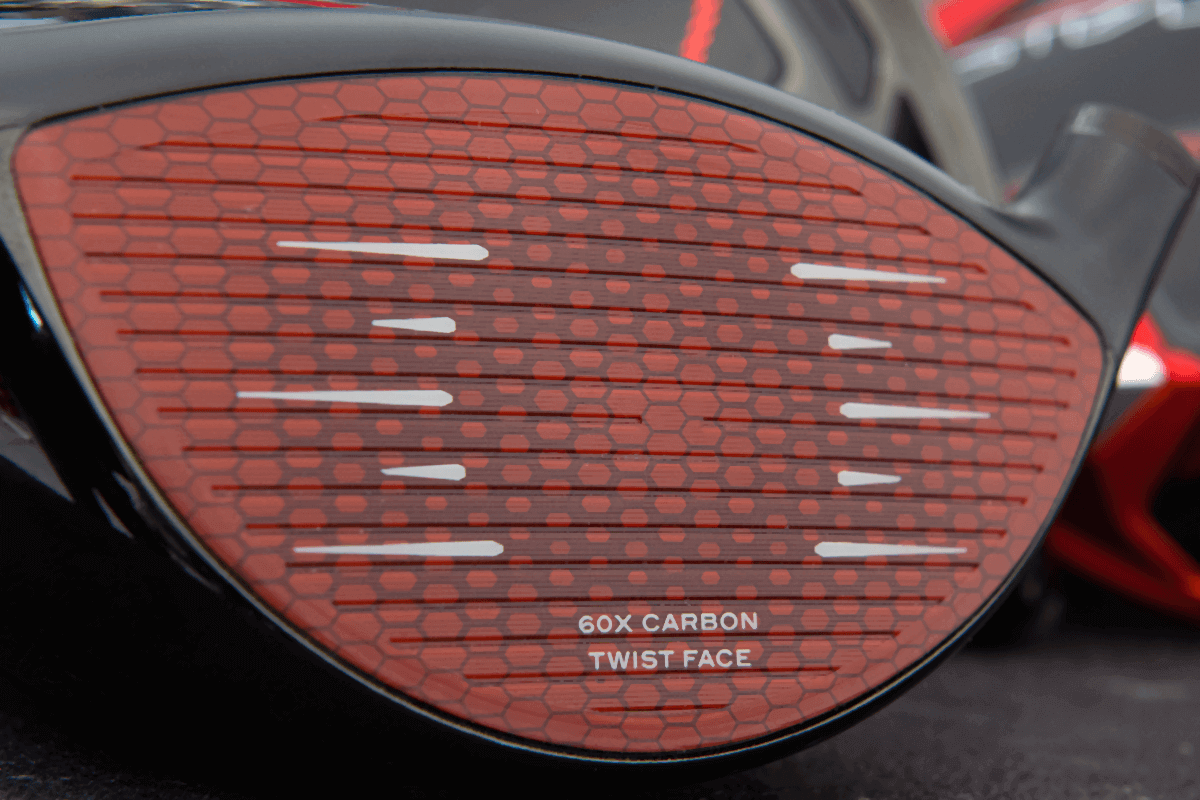- TaylorMade has announced the Stealth 2 driver family.
- The Stealth 2 Plus, Standard, HD are more forgiving than their predecessors.
- Retail price is — for the Stealth 2 Plus and — for the Standard and HD models.
- Pre-sale starts immediately with full retail availability on February 17th.

Let’s start our TayorMade Stealth 2 driver story by rewinding a year.
Last season’s Stealth driver was not TaylorMade’s first carbon driver but it did represent a significant milestone in what TaylorMade called the “20-year journey.” A year later—whether you want to look at that as a one-year journey or a 21-year journey—none of us should reasonably expect the advancements made between Year 20 and Year 21 to be nearly as significant as those from Years 1 to 20.
So, like Stage 2 of the RocketBallz franchise, you’d expect Stealth 2 to be a bit Stealth-ier than the original and I suppose it is. I might even argue there’s enough here to suggest that what we’re getting is a bit more than a Stealth 2.0. I’d be inclined to say it’s akin to a Stealth 2.25 or Stealth 2.5.
That said, for the sake of not muddying the waters (or confusing the search engines), we’ll round down and refer to it as Stealth 2.
Stealth 2 Driver – A different kind of speed

As you may recall, the emphasis of the original Stealth design was more speed. TaylorMade’s testing suggested golfers would see an average increase of 1.1 mph. Some got more, some saw less (that’s how averages work), but Stealth was an inarguable retail success.
Things were perhaps more compelling on the PGA TOUR. Data readily available from PGATOUR.com shows that Team TaylorMade guys gained an average of 2.1 mph of ball speed (compared to what they played in ’21) with the Stealth.
Dustin Johnson lost about one mph (and data is only available until he jumped to LIV) but Rory was 1.3 faster. Obviously, others were significantly faster—again, this is how averages work.

I suppose the gains at the Tour level speak to the fact that the original Stealth driver design emphasized speed on center-face impact. With the Stealth 2, TaylorMade’s goal was to retain peak center speed while increasing off-center speed and boosting forgiveness throughout the Stealth 2 driver family.
For those who enjoy a bit of TaylorMade wordplay, that’s what you call “Fargiveness.”
To make Stealth 2 Driver more fargiving than the original, TaylorMade made some not insignificant tweaks to its carbon-face structure and the chassis that holds everything together.
Updated Face Design

Starting with the face, the summary point is that the updated 60x Carbon Twist Face is two grams lighter. While saving weight is part and parcel of driver design, there’s nothing speed-boosting in the weight savings alone. Fundamentally, it’s changes to the carbon-fiber layup and topology of the carbon face that are responsible for the gains.
Specifically, TaylorMade changed the way it layers the carbon fiber in the face to create a more aggressive version of its speed-preserving Inverted Cone Technology. The original face was 4.3 millimeters thick at the perimeter and about 4.7 at face center. The new face has been slimmed down to 3.6 millimeters at the edges. While it’s a bit thicker in the middle, TaylorMade says the thinner edges make the thicker face center ball speed neutral relative to the previous model.
When the 60-ish layers of carbon fiber come together the result is a sweet zone that’s 20 percent larger. For the sake of clarity, let’s define the sweet zone as the area of the face where the coefficient of restitution (COR) is above .810.

Again, there’s nothing particularly mystical about how TaylorMade ramped up off-center speed. As with most any new technology (and new face technology, in particular), as it becomes more tested in the marketplace companies become more confident in the durability aspect of performance. The natural progression of that growing confidence is to become a bit more aggressive in how that technology is implemented.
That’s effectively what you’re seeing with Stealth 2.
As a quick note, with Stealth, TaylorMade leveraged a single face design across all three models. With Stealth 2, each model features a unique face optimized for the design. The original face was optimized for Stealth Plus. With the standard Stealth and the Stealth HD getting unique faces this time around, those models should see a bit more improvement still.
Stealth 2 – Higher MOI

The second part of our Stealth 2 story (higher MOI) is driven by changes in the materials and construction of the chassis.
Borrowing heavily from the SIM 2, the trailing edge of the Stealth 2 is constructed from a different material. As you may recall, SIM 2 featured an aluminum ring connected to a titanium chassis. With Stealth 2, the ring now now made from an injection-molded carbon material.
In addition to being more durable, the carbon ring is about two grams lighter than the SIM 2’s aluminum ring, which was already lighter than titanium.
The carbon ring, along with a carbon fiber crown and sole plate combined with the carbon face, are joined to the titanium chassis. Back weights complete the assembly.
The design is notable for being the first time a TaylorMade driver has contained more carbon than titanium. Ultimately, the intent is to save a few grams here or there which can be anchored at the back. That gives you higher moment of inertia (MOI), the industry’s standard forgiveness metric, throughout the lineup.

Stealth 2 Drivers – Other notable tweaks
Filed under also new and/or improved …
Underneath the nanotexture outer layer, TaylorMade has deepened the red color of its stock carbon face. It’s bolder and will likely prove more visible on TV.
To my eye, the lines where the crown and body meet are quite a bit cleaner this year, though that could be how my eyes perceive things with the new gloss crown.
TaylorMade moved away from matte crowns after complaints about fingerprints from both their Tour staff and fitters. Yeah … that’s a real thing that came up more than once.
Also of note, while the Stealth 2 Plus has a relatively clean crown design, the Stealth 2 (standard) and Stealth 2 HD drivers feature a red ring along the trailing edge. The design was popular with mid to high handicap golfers. While most Tour players preferred the cleaner look, Tiger and Scotty Scheffler were also fans of the red ring.
With the commonalities covered, let’s take a closer look at the three models that make up the Stealth 2 Driver family
TaylorMade Stealth 2 Plus Driver

By now, you should know what you’re getting with the Plus model. As with previous Plus iterations, the Stealth 2 Plus is the lowest-spinning driver in the Stealth 2 family.
With that, it’s also the least forgiving. TaylorMade wasn’t specific but even with a seven to nine percent MOI boost throughout the lineup, we’re still talking about a driver that will likely shake out well below 5,000 MOI.
Bottom line? It’s not forgiving by any reasonable standard.
For the target golfer, that shouldn’t be an issue and it’s certainly part of the reason TaylorMade offers two other Stealth 2 models.

Those construction changes we mentioned allowed TaylorMade to add another five grams to the track weight (now 15 grams). That increases the amount of shot-shape correction created by a forwardly placed heel-toe sliding weight.
Of note, TaylorMade flattened the lie angle of its TaylorMade Stealth 2 driver by two degrees. That should introduce a bit of native fade bias into the performance equation. The change makes sense given that TaylorMade’s adapter doesn’t offer a flat setting.
With Stealth 2 Plus, flat is effectively the default lie angle with the adapter providing the capability to make it a bit more upright if needed.

Finally, based on Tour player feedback, TaylorMade gave the Stealth 2 a straight topline at address and added a bit of dip in the toe to offset the visible aspects of TwistFace at address.
The Stealth 2 Plus is available in eight, 9 and 10.5 degrees.
Retail price is $649 (he whispered while running out of screaming range)
TaylorMade Stealth 2 Driver

Not much has changed with the standard Stealth 2 insomuch as it’s still the bread and butter of the Stealth lineup.
In addition to an optimized face design, the standard Stealth gets an MOI bump by way of the 25-gram rear weight. The more rearward center of gravity should put the Stealth 2 in the low 5,000s for MOI.
In any given year, you’re not likely to find a TaylorMade driver among the highest MOI crowd. That’s largely a brand philosophy thing as, in the driver category, the company has traditionally favored speed above most anything.

Fundamentally, that’s probably the smart play. The MOI bump isn’t going to catapult Stealth 2 into the upper echelon of forgiving drivers but every little bit of forgiveness helps, especially if there isn’t a speed penalty attached.
In addition to the added forgiveness, TaylorMade has built just a touch more draw bias into the standard model.
The standard TaylorMade Stealth 2 driver is available in nine, 10.5 and 12 degrees. Retail price is $599.
TaylorMade Stealth 2 HD Driver

The biggest departure from the original within the Stealth 2 HD lineup can be found with the Stealth 2 HD.
Previous iterations of TaylorMade’s HD (High Draw) models haven’t been exceptionally forgiving nor, for that matter, have they’ve been heavily draw-biased.
Our testing suggested a slight to moderate draw bias. That made the Stealth 2 HD a good fit for someone who needs higher launch and a little bit of slice correction but not necessarily the guy hitting banana cuts.
This time around, TaylorMade wanted to create more separation between the standard and HD models. To that end, it increased the MOI of the HD. That put another 200 rpm or so of spin into the head while cranking up the draw bias.

Golfers should expect an additional five to 10 yards more worth of left-side bias with an MOI number in the low to mid 5,000s. Again, that’s not going to challenge the market leaders but by TaylorMade standards it’s an exceptionally forgiving option.
The interesting ripple here is that the draw-biased driver is not typically the most forgiving in the lineup. Often golfers equate draw bias with forgiveness but that’s not how physics typically works out. Usually it’s the relatively neutral driver in the middle of the lineup that provides the most forgiveness.
That said, there appears to be an emerging trend in the industry towards more forgiving draw-biased drivers. That’s the case with the TaylorMade Stealth 2 HD where the 30-gram rear weight helps push MOI beyond that of the standard model.

Along similar lines, the stock shaft length of the Stealth 2 HD drive is shorter than both the Stealth 2 Plus and Standard models. The shorter shaft promotes more center-face contact. Manufacturers are often reticent to leave yards on the table—and TaylorMade concedes it’s giving up a yard or two with the shorter shaft. Still, making a shorter driver for golfers looking for more forgiveness is the kind of sensible decision golf companies aren’t always willing to make.
Kudos to TaylorMade on this one.
The Stealth 2 HD is available in nine, 10.5 and 12 degrees.
TaylorMade Stealth 2 Women’s
The women’s version features a different colorway (silver) and is a little bit lighter, making it an excellent option for golfers seeking a lighter weight design—regardless of gender.
TaylorMade MyStealth 2
Finally, TaylorMade will offer the Stealth 2 through its MyStealth 2 custom program. This time around, golfers can choose from eight face colors (pink, purple, black, light blue, dark blue, yellow, green).
The carbon ring is available in five colors: black, white, silver, gun metal and gold.
The topline can be painted black or white. The crown is available in gloss or satin, and for those who don’t like to look at anything at address, you can order your MyStealth Plus 2 without the TaylorMade T-Bug logo.
MyStealth 2 will be limited to the Stealth 2 Plus in nine and 10.5 degrees (both- right and left-handed).
Retail price for a custom MyStealth 2 driver is $729.99.
TaylorMade Stealth 2 Drivers – Stock shafts

Stock shafts for the TaylorMade Stealth 2 driver are the:
- Fujikura Speeder NX – High launch
- Fujikura Ventus TR* – Mid launch
- Diamana Kai’Li – Low launch
While I hope it would be obvious enough, I’d be remiss not to provide my explicit reminder that the Ventus TR found in the Stealth 2 is a non-VeloCore version of the shaft. That’s to say, it’s not a “real-deal” Ventus.
I could continue to bang my head into the wall on this one because I legitimately don’t understand why Fujikura remains willing to devalue the Ventus brand. Instead, I’ll simply explain that $600-plus isn’t enough to get you the incredibly popular aftermarket shaft. If you really want one, TaylorMade will happy sell you one (and they sell a lot of real Ventus as well).

Pre-sale for the TaylorMade Stealth 2 family of drivers begins January 10th. Full retail availability starts on February 17th.
For more information, visit TaylorMadeGolf.com.














Jeff
1 year ago
Enough of these yearly “new” driver releases.
Meet the new boss….same as the old boss as The Who said.
Look at car manufacturers. They release new models each year, but never say they’re “new” like golf companies do..
Car companies realize that each model year is incremental improvement and sell it as such. Only on major redesigns do they bring out the “all new for 20XX….” language.
Why can’t golf companies embrace this as this yearly cycle of releases is getting to be white noise.
BMPNW
1 year ago
On the plus side, you can now get what was the cutting edge technology for the past year for a discount if you’re in the market. Annual releases help cascade the discounted prior year models faster. Get 95% of the performance of the newest club at 20-25% off.